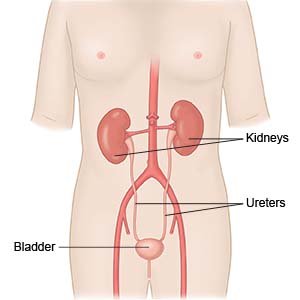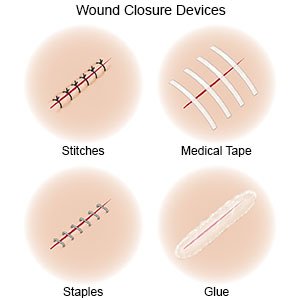Laparoscopic Partial Nephrectomy
Medically reviewed by Drugs.com. Last updated on Aug 4, 2025.
Laparoscopic partial nephrectomy is surgery to remove part of your kidney. Surgery will be done through small incisions on your side.
 |
WHILE YOU ARE HERE:
Before your surgery:
- Informed consent is a legal document that explains the tests, treatments, or procedures that you may need. Informed consent means you understand what will be done and can make decisions about what you want. You give your permission when you sign the consent form. You can have someone sign this form for you if you are not able to sign it. You have the right to understand your medical care in words you know. Before you sign the consent form, understand the risks and benefits of what will be done. Make sure all your questions are answered.
- An IV is a small tube placed in your vein that is used to give you medicine or liquids.
- Antibiotics may be given through your IV to prevent an infection.
- General anesthesia will keep you asleep and free from pain during surgery. Anesthesia may be given through your IV. You may instead breathe it in through a mask or a tube placed down your throat. The tube may cause you to have a sore throat when you wake up.
During your surgery:
- Your surgeon will make 3 to 5 small incisions in your side. Your abdomen will be filled with carbon dioxide to lift the muscles away from your organs. This helps the surgeon see your kidney better.
- Your surgeon will remove the damaged part of your kidney. Your adrenal gland may also be removed. The adrenal gland sits on top of your kidney and produces hormones.
- Your incisions will be closed with stitches or medical glue and covered with bandages.

Related medications
After your surgery:
You will be taken to a room to rest until you are fully awake. Healthcare providers will monitor you closely for any problems. Do not get out of bed until your healthcare provider says it is okay. When your healthcare provider sees that you are okay, you will be able to go home or taken to your hospital room.
- A drain will be used to remove extra fluid from the surgery area. This helps prevent infection. The drain is taken out when the wound stops draining.
- You will be helped to walk around after surgery. Movement will help prevent blood clots. You may also be given exercises to do in bed. Do not get out of bed on your own until your healthcare provider says you can. Talk to healthcare providers before you get up the first time. They may need to help you stand up safely. When you are able to get up on your own, sit or lie down right away if you feel weak or dizzy. Then press the call light button to let healthcare providers know you need help.
- Medicines may be given to prevent or treat pain, nausea, or a bacterial infection. Medicine may also be given to make it easier for you to have a bowel movement. You may need this medicine to prevent constipation.
RISKS:
You may get an infection or bleed more than expected. You may need 1 large incision instead of smaller ones. Nerves, blood vessels, muscles, or organs may be damaged. The carbon dioxide used during surgery may cause shoulder or chest pain for 1 to 2 days after your surgery. The remaining part of your kidney may not work as well as it did before.
CARE AGREEMENT:
You have the right to help plan your care. Learn about your health condition and how it may be treated. Discuss treatment options with your healthcare providers to decide what care you want to receive. You always have the right to refuse treatment.© Copyright Merative 2025 Information is for End User's use only and may not be sold, redistributed or otherwise used for commercial purposes.
The above information is an educational aid only. It is not intended as medical advice for individual conditions or treatments. Talk to your doctor, nurse or pharmacist before following any medical regimen to see if it is safe and effective for you.
Further information
Always consult your healthcare provider to ensure the information displayed on this page applies to your personal circumstances.
